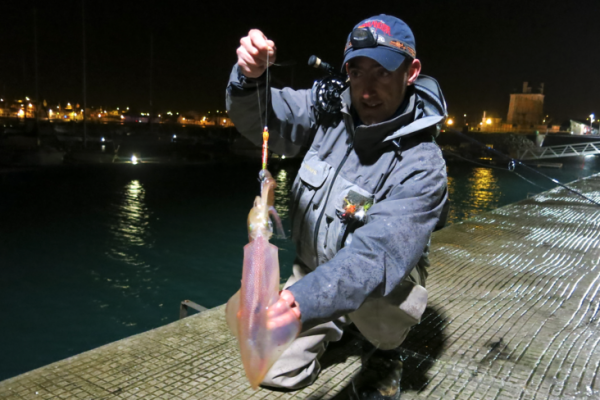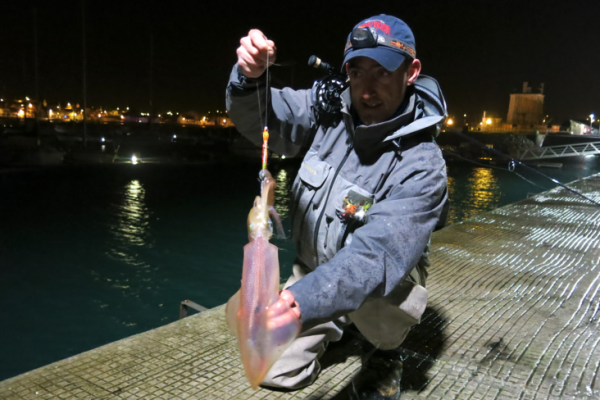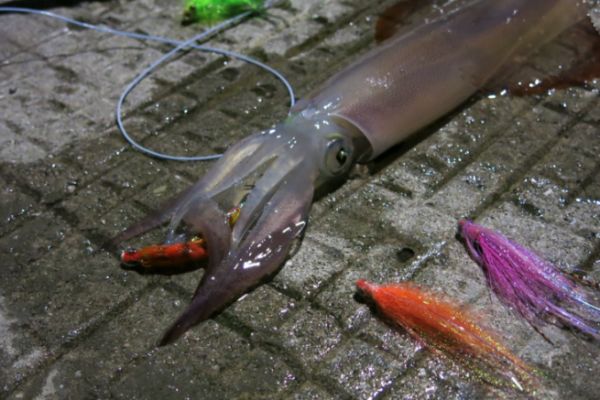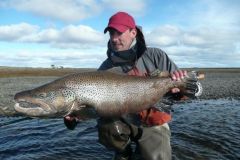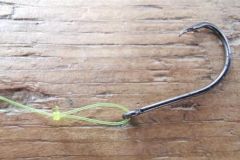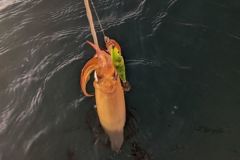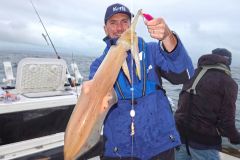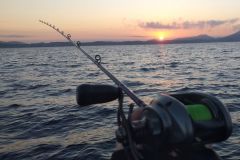A challenge to meet
I've been living in Brittany for over 20 years, and every late autumn and early winter, many of my (lure) fishing friends suggest that I go squid fishing at night.
They go there to have a good time with friends, but also for gastronomic reasons. Squid, cooked in the Armorican style, is indeed a delicacy, and as such is highly coveted at this time of year. In Brittany, it's a tradition to go squid fishing at this time of year, and many fishermen gather every year in the ports or on the jetties of most of the Breton departments.
In my case, the aim was quite different. Catching a squid on the fly wasn't a dream, far from it, but rather a bet between friends. After repeatedly refusing to do so a few years ago, I decided to take up the challenge. Facing the wind and the cold in the middle of the night to catch this cephalopod is indeed a challenge.
What about squid?
The squid is a cephalopod mollusk of the cuttlefish family, also known as squid, chipiron or supion in southern France. It is fished mainly with jigs. In most French ports, squid are caught mainly at night. In Finistère, the best spots are in Brest, Douarnenez and the Crozon peninsula, at high tide, especially when the sea is rough and the squid are concentrated and approaching the coast.
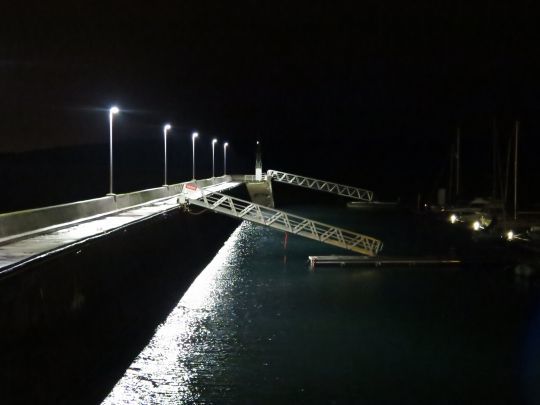
Squid fly-fishing equipment
As far as equipment is concerned, I use a fast-action sea rod in 8-gauge silk, so that I can cast the rather heavy and bulky rig without too many problems in the wind.
Most of the time, I use a floating line extended by a 3-metre plunging tip and a 1-metre short leader to stay close to the bottom at 30-35°. To be able to lift the squid if you're overhanging (which is often the case).
This rig allows me to animate vertically rather than horizontally with a plunging line. It brings the fly sufficiently up to the surface on my long casts, in the same way as a jig.
An S4 sinker line, terminated with a short 80 cm leader at 30°, may also work.
For flies, I couldn't find anything on the Internet or in the literature. So I had to rack my brains to come up with a colorful imitation jig.
To do this, I've assembled tube-flies from different materials, which fit onto another tube to which I've attached a basket (special hook for jigs). It's a bit of a DIY job, but it's still pretty simple.
This rig allows you to have the basket (multiple hooks) in the tail, so you can hook the squid as soon as it places its tentacles on the fly.
Proven tube fly colors: mauve, violet, chartreuse, orange
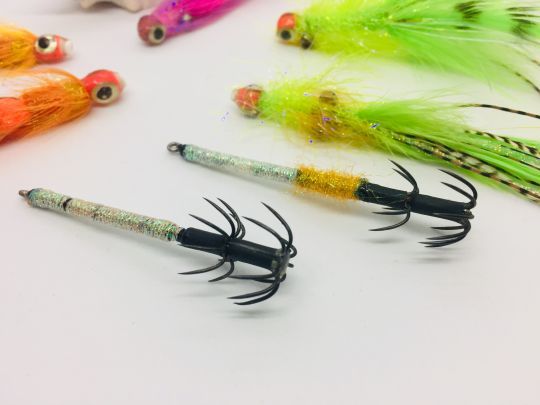
What technique should you use for fly-fishing squid?
The technique is quite simple, just look at how jig fishermen do it! They waddle their jigs up and down with the tip of the tip of the jig, looking for the right height of water to find their swimming depth.
Long pauses often seem to trigger an attack. Catches are usually made between two waters, but it's not uncommon to observe squid hunting on the surface in schools of fry under lampposts. In this case, it's possible to sight-cast on active squid in order to seduce them and watch them operate, which is always interesting and fun. So I reproduced what my friends were doing, but with my fly tackle.
After casting into an area where squid are likely to come, I let my line tip and leader sink for a while. I count the number of seconds and try to find out how deep they are if I hit them. Then I continue fishing in this area.
I use short, quick, dry pulls followed by very long pauses. I proceed in the same way for the entire length of the silk exit.
All these squids took the fly during breaks on the way back down, with more or less dry shots. The biggest (with a body of over 40 cm) pulled quite hard. And by expelling the water from its siphon, it'll give me a nice shot, but let's face it, squid are no sport fish. But on the plate, it's delicious. And yes, not too much no-kill on this species!
The fishing action remains slow, the touch heavy as if you had a bag at the end of the line or were hooked on the bottom, and the fight not very interesting. The only satisfaction I got out of it was that I managed to catch a few with my home-made flies.
Nevertheless, I must admit I'm rather surprised by the colors, and I've come to find this bug pretty despite its "meeting of the third kind" appearance! The reflections are of multiple colors and the intriguing eye is of rare beauty!
It's one more challenge met and one more species validated.
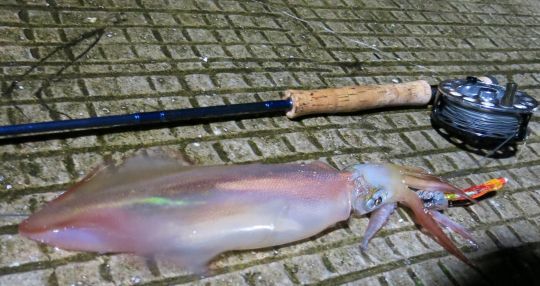
Squid recipe
In Brittany, squid is often cooked Armorican-style, using the following ingredients: onions, garlic, white wine, lobster bisque, crushed tomatoes, 1 glass cognac and olive oil.
The secret lies in cooking them so that they melt, not "spring"!
Judging by the number of enthusiasts at the water's edge in bad weather, it's obviously a delicacy of choice!

 /
/ 